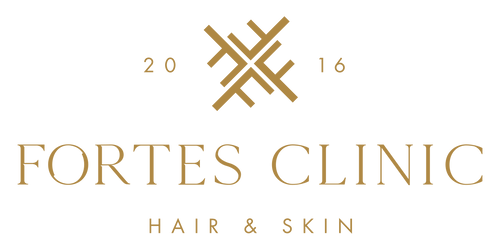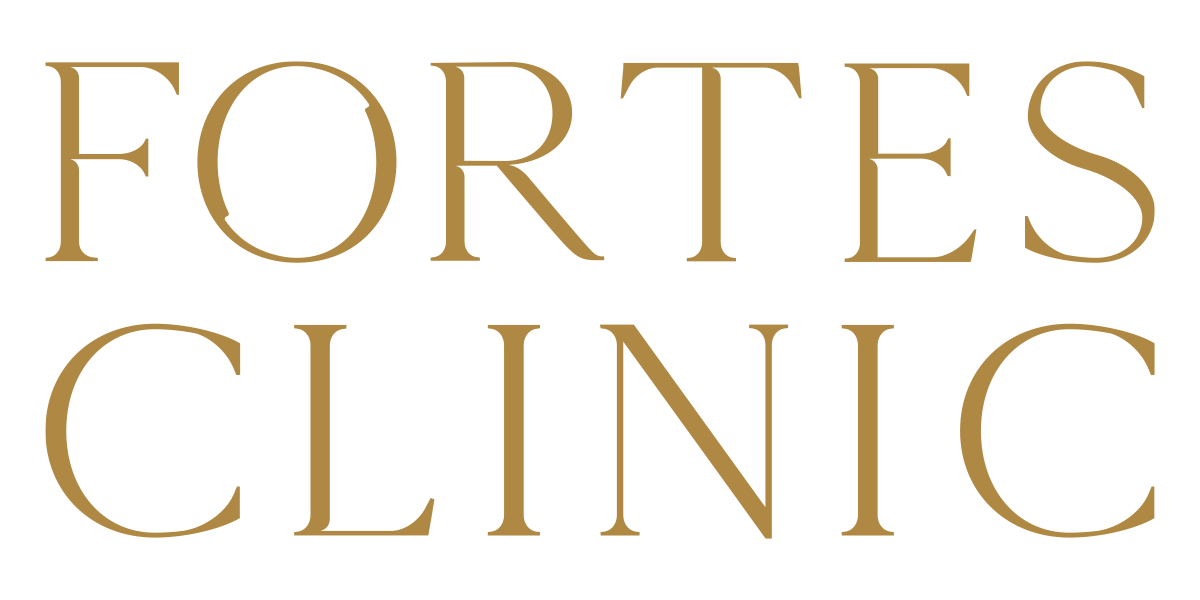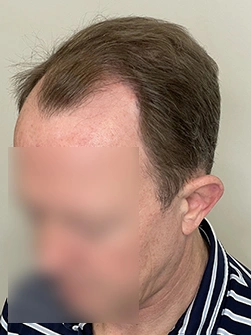Introduction
Hair transplants remain one of the most reliable solutions for hair loss, but many patients ask: Does age affect hair transplant success rates? At Fortes Clinic, we treat people in their twenties through to their seventies and beyond, all seeking natural, lasting results. Understanding how age affects hair transplant success rates helps patients make an informed decision.
The Role of Technology and Innovation
Advancements in hair transplant technology have made procedures more successful across all age groups. Innovations such as sapphire blade FUE tools and refined micrografting techniques ensure precision and minimise trauma to the scalp. For older patients with finer hair or reduced donor density, these technological improvements optimise graft survival rates and create natural density without visible gaps. Younger patients also benefit from these tools as they reduce scarring and accelerate recovery times, allowing them to return to daily life sooner. At Fortes Clinic, we invest in the latest hair restoration technology, ensuring that every patient receives care that is aligned with global best practices and innovations.
Does Age Affect Hair Transplant Results?
Age can influence factors like healing speed and donor hair density, but it does not determine overall success. The stability of hair loss, surgeon expertise, and overall health have a far greater impact on hair transplant success rates.
Younger Patients: Key Considerations
Younger patients in their twenties often want immediate correction for early thinning. However, surgeons usually advise waiting until hair loss stabilises, as transplanting too early can lead to uneven results as surrounding hair continues to thin. For these patients, using treatments such as Finasteride or Minoxidil may help slow progression before surgery. Learn more about medication after a hair transplant.
These patients also benefit from scalp analysis sessions and hair health monitoring before undergoing a transplant. Combining lifestyle changes, medication, and planned future surgery can often provide better long-term results.
Additionally, understanding family history can help younger patients set realistic expectations. If male or female pattern baldness is progressive in the family, planning for future hair restoration stages is crucial to maintain a natural appearance over the decades ahead.
Middle-Aged Patients: Strong Candidates
Patients aged 30-50 often achieve the best results. Their hair loss patterns are usually clear, donor hair remains thick, and expectations are realistic. Many choose FUE or FUT to restore density and achieve natural-looking outcomes.
Middle-aged patients often combine transplants with PRP therapy to improve hair thickness and encourage the growth of existing hair. This holistic approach not only restores lost hair but helps maintain a youthful, confident appearance.
Many professionals in this age group seek hair restoration to remain competitive in the workplace. Feeling confident about appearance is often linked to enhanced performance and self-assurance in meetings, presentations, and client interactions.
Older Patients: Balanced Results
Older patients in their sixties and seventies can still achieve excellent results if they are healthy and have sufficient donor hair. Transplants for older individuals focus on maintaining natural density suited to their age and facial structure. Read more about what age is best for a hair transplant.
Patients in this group often ask about recovery times. While older patients may heal slightly slower, they benefit from stable hair loss patterns, meaning fewer future procedures are required.
Additionally, older patients tend to prioritise subtle improvements that align with their age. Their goals often focus on framing the face better, reducing the appearance of bald spots, and maintaining dignity and confidence in social situations.
Preparation For All Ages
Good preparation helps all patients achieve optimal results. This includes stopping smoking, limiting alcohol, eating a nutrient-rich diet, and keeping the scalp clean with mild shampoos in the weeks before surgery. Patients are also advised to get plenty of sleep and manage stress, as these can affect hair health and recovery.
A thorough consultation with a Fortes Clinic specialist is vital. During this appointment, patients can discuss their goals, understand the expected outcomes based on age and hair type, and plan for aftercare and future hair maintenance.
Lifestyle and Long-Term Maintenance
Transplants provide permanent results for treated follicles, but untreated areas can continue thinning, particularly in younger patients. Older patients often have stabilised hair loss, reducing the need for future procedures. Follow-up appointments, scalp massages, and PRP therapy can help maintain outcomes.
Long-term maintenance also includes using mild shampoos, avoiding excessive heat styling, and protecting the scalp from sun exposure to keep hair follicles healthy and strong.
Nutrition plays an important role in hair health. Eating foods rich in vitamins A, C, D, and E, zinc, iron, and omega-3 fatty acids supports ongoing growth and strength. Staying hydrated is equally crucial for maintaining scalp health.
Psychological Benefits
Hair restoration boosts confidence and self-image at any age, improving professional and social interactions and reducing daily worries about hair loss. Many patients say they feel more comfortable in public and experience an overall boost in mental health after seeing the results.
A restored hairline often leads to better mental well-being, reduced anxiety about appearance, and increased participation in social activities without feeling self-conscious.
Combining Treatments
Combining surgery with PRP therapy strengthens results, while medications like Finasteride reduce future hair loss, especially in younger patients. For older patients, these treatments can maintain density and improve scalp health, making hair appear thicker and healthier overall.
Some patients also benefit from low-level laser therapy to stimulate blood flow to the scalp, enhancing the health of both transplanted and existing hair.
Additional Considerations for Every Age Group
At Fortes Clinic, our specialists provide personalised plans tailored to each age group. For young patients, this may include regular assessments and gradual restoration planning. Middle-aged patients may benefit from combined treatments and lifestyle guidance to preserve hair quality, while older patients will be advised on the safest and most natural approaches to restore confidence without appearing over-corrected.
Conclusion
Does age affect hair transplant success rates? While age influences factors like donor hair quality and healing speed, excellent results are possible at almost any age with the right planning and expert care.
Contact Fortes Clinic
Contact Fortes Clinic today to arrange your consultation and plan your hair restoration with confidence.



